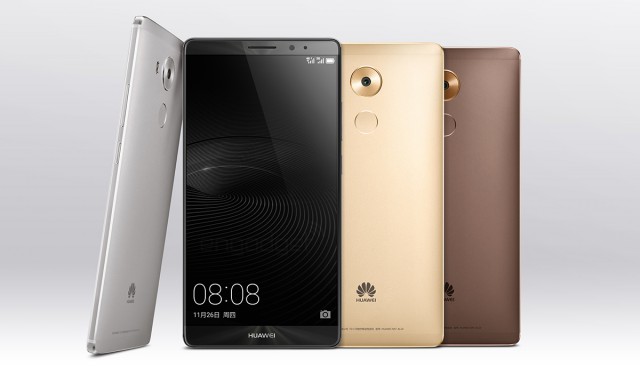Huawei unveils new Mate 8 flagship

Huawei has slowly but surely been strengthening its position in the smartphone market, taking the last place on the podium in the third quarter of the year. It may not be a threat to Apple in the near future, but Huawei has a significant advantage in terms of unit shipments over fourth place holder Lenovo.
Part of the company's success can be attributed to its flagship Android devices, which offer similar specs to premium competitors but at a price which is considerably more attractive in the eyes of a wider range of consumers. And its latest flagship, Mate 8, promises to be even more appealing, especially for phablet enthusiasts.
Mate 8 comes on the larger side, even for a phablet, packing a 6-inch display. The resolution is 1,080 by 1,920, which is not as impressive as what some of its Android competitors promise. That said, Mate 8's size is kept in check by a 83 percent screen-to-body ratio.
Inside, there is a Huawei-developed Kirin 950 octa-core processor, which is manufactured using the 16nm FinFET+ process (like Samsung's latest flagship Exynos chip); there are four 2.3 GHz Cortex A72 cores and four 1.8 GHz Cortex A53 cores, Mali-T880 graphics and a 4G LTE Cat.6 modem. There is also a coprocessor inside, that can handle low-energy tasks, like voice recognition, MP3 playback and more.
Just like on the Nexus 6P, on the back of Mate 8 users will find a fingerprint sensor which is said to be extremely accurate. Also on the back there is a 16 MP camera, and, underneath it, a 4,000 mAh battery.
In terms of storage, we are looking at 32 GB to 128 GB versions, with a microSD card slot. Available color options include Champagne Gold, Mocha Brown, Moonlight Silver, and Space Gray.
Another interesting feature of Mate 8 is its operating system. Huawei's new flagship comes with Android 6.0 Marshmallow out-of-the-box, so, at the time of its release, it will be running the latest and greatest in terms of software. Huawei has slapped its own EmotionUI 4.0 on top.
In China, Mate 8 will be available for roughly $470 for the 32 GB version, with 3 GB of RAM, $580 for the 64 GB version, with 4 GB of RAM, and $689 for the 128 GB model, with 4 GB of RAM. It will not launch in Western markets until after CES 2016, where it will also be officially presented.
